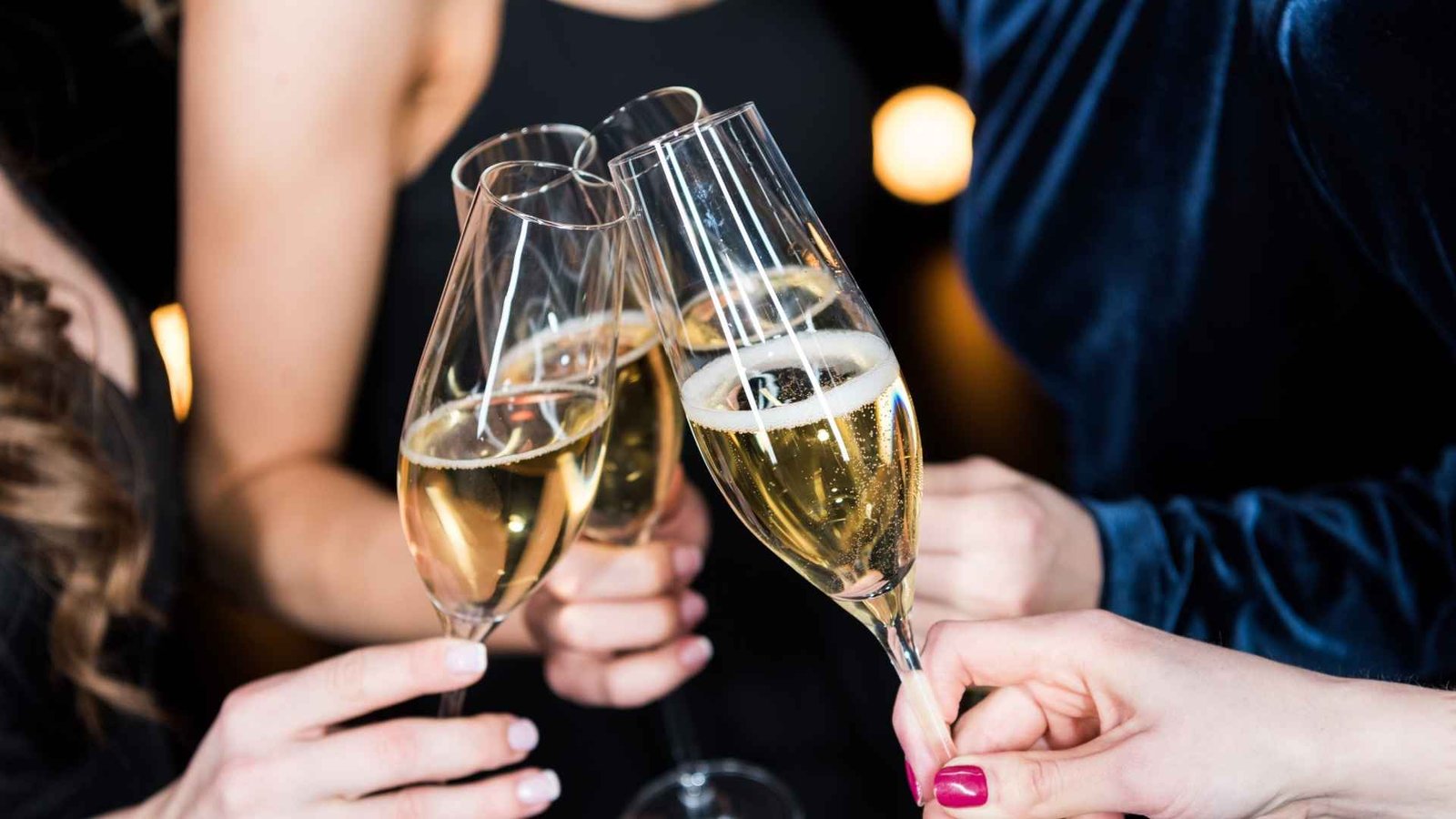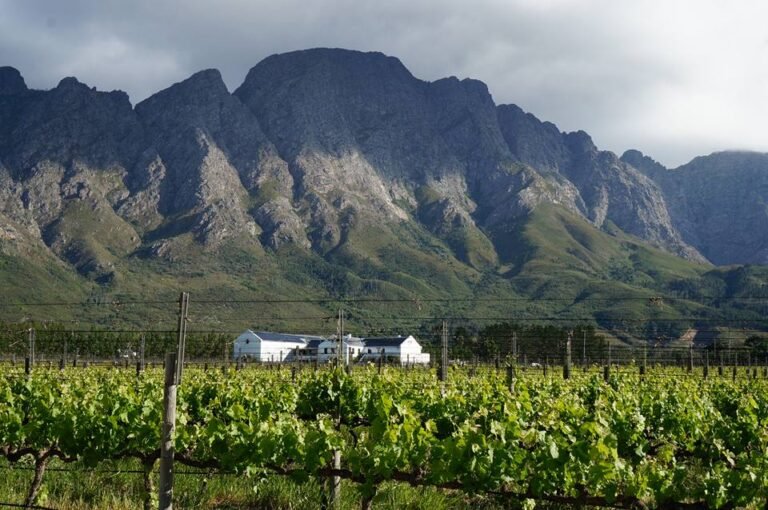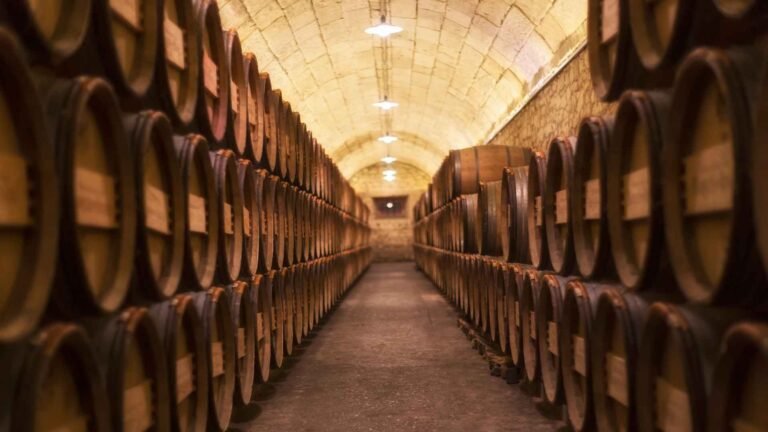There are different processes for making wines with bubbles or carbon dioxide. We are going to investigate its characteristics and peculiarities. According to their pressure, the wines are classified as still (less than 1 kilo or atmosphere of pressure); semi sparkling (from 1 to 3 kilos of pressure) or sparkling (more than 4 kilos of pressure).
To make sparkling wine, the harvest is normally early than for regular wine to achieve higher acidity and lower alcohol content (10/11 degrees). A base wine fermented at a low temperature is made to preserve fruit aromas and flavors, without malolactic fermentation to keep natural acidity. They are made with chardonnay or pinot noir grapes more frequently or with other varieties such as semillon or pinot gris.
Carbon dioxide can be of exogenous origin, injected externally into the wine, giving rise to aerated sparkling wines. The procedure is the same as that practised in sodas and carbonated waters, but in this case the wine must indicate that it is aerated, it cannot be called sparkling wine. The carbon dioxide gas CO₂ comes from a tank under high pressure and is injected into a dry wine or a wine with residual sugar, through a device called a saturator. Gas can also be of endogenous origin, produced within the wine through different methods that seek to retain the natural gas that is generated in the fermentation process. This can be achieved from different methodologies:
- TRADITIONAL METHOD OR CHAMPENOISE
The method was created in Champagne, France and has a controlled designation of origin. The word “Champagne” cannot be used for wines produced outside this zone and that meet all the requirements to possess the certification of origin. What is done using this technique is a second fermentation in the bottle. We detail the process step by step:
– TIRAGE LIQUOR To the base wine, what is called tirage liqueur is added, made up of sugar (25 grams per liter of wine) + Saccaromyces Bayanus yeast. This yeast will consume the sugar, generating carbon dioxide and alcohol. For every 17 grams of sugar, 1 degree of alcohol is generated, so with the addition of 25 grams of sugar, the sparkling wine will increase 1.5 degrees of alcohol. For this reason, the base wine must be of low alcohol content. The tirage liqueur is added directly into the bottle that is placed horizontally. The second fermentation of the wine takes place in the bottle at 15 degrees of temperature for 30 days. The bottles are covered with a crown cap that has what is known as an operculum (a receptacle where the yeasts are to be deposited and then eliminated).
– AGING Once the yeasts consume all the sugar, they precipitate and die, receiving the name of lees. In the traditional method, they are left in contact with the wine, since the yeasts, in a process called autolysis, consume oxygen (protecting the wine from oxidation), provide aromas (of toast, nuts, brioche bread) and release proteins that migrate to the wine, giving it a smooth, unctuous and creamy texture.
– REMOVAL OF THE LEES The bottles are gradually placed in a vertical position, manually twice a day, or with the help of a machine (called turning pallet). The objective is to settle the lees in the operculum.
– REMUAGE What is known as stirring or remuage is carried out, a process that consists of turning the bottles to favor the settling of sediments and lees towards the operculum so they can then be eliminated. This process can be manual or carried out with machines (turning pallets).
– DISGORGEMENT The bottles are subjected to a disgorging to eliminate the yeasts and sediments settled in the operculum. To do this, they are submerged to the peak in a freezing machine (with water and propylene glycol) at -24 degrees. In this way, when the crown cap is removed with the cap, the frozen yeasts/ lees are expelled, also with the help of the carbon dioxide present in the bottle. Disgorgement can be manual or mechanical.
– DOSAGE AND FILLING OF BOTTLES Bottles are filled to complete the loss due to the liquid that was lost in disgorgement. This liquid is called expedition liquor, it can be white wine from the same age as the base wine or white wine aged in barrels. In turn, the expedition liquor will have the necessary sugar level to compensate the acidity, depending on the style that the enologist wants to give to each wine. According to the level of sugar provided in this stage, sparkling wines are classified as:
a) Nature (3gr / l) It has only the residual sugar of the base wine
b) Brut Nature (7 gr / l)
c) Extra Brut (11 gr / l)
d) Brut (15 gr / l)
e) Demisec (15 to 40 gr / l)
f) Sweet (40 gr / l)
g) Extra sweet (60 gr / l)
– COVERED AND MUZZLE. The cork, the metallic protection or muzzle, the label and the back label are placed on them for their commercialization.
2. CHARMAT OR GRAN VASS METHOD
In this technique, the second fermentation is carried out in the tank. Its creator was Eugenio Charmat in France while in Italy the invention is attributed to Martinotti.
– SECOND FERMENTATION The tirage liquor is added to the base wine, made up of sugar + Saccaromyces Bayanus yeast. This yeast will consume the sugar, generating carbon dioxide and alcohol. The closed tank must retain this carbon dioxide. That process takes about 30 days at 15 degrees of temperature. There is an Italian version called Charmet lungo, where the wine is left to rest with the lees, which achieves better integration of the carbon dioxide, but the same result is not achieved as with the traditional method to gain aromatic complexity. Tanks are very large (5000 to 100,000 liters) and thick-walled because they must withstand a lot of pressure.
– FILTERING The lees are separated by centrifugation and isobaromatic filtering, the wine goes through several circuits at low temperature to avoid losing pressure. Anyway, something is lost since from 6 kilos of pressure, the wine becomes 4 kilos.
– BOTTLE FILLING and DOSAGE The wine enters a fractionation line, is placed in bottles and then expedition liquor is added to obtain a sparkling wine of the desired style: Nature, Brut Nature, Extra Brut, Brut, Demi-sec, Sweet or Extra sweet.
– CORKING/ MUZZLE AND LABELING The synthetic stopper or cork, the muzzle is placed, it’s labeled and packaged to go on the market.
3. ANCESTRAL OR RURAL METHOD
It’s a method used in the 14th century in France, they have a low alcohol content and less carbon dioxide than Champenoise or Charmet sparkling wines.
– The first fermentation is interrupted, to preserve residual sugar. At least 20/24 grams per litre must remain to be able to make the second fermentation in the bottle.
– The wine is divided into bottles so the yeasts continue to ferment to produce carbon dioxide and alcohol.
– Traditionally the lees were left in the bottle, so the consumer should be informed. In this process, neither tirage or expedition liquor is used.
There are some modern variants of the ancestral method:
- Several biodynamic wineries use this method to produce limited production of sparkling wines. As the pressure is lower, it’s allowed to leave the crown cap (Pétillante naturel or Pet Nat-Natural Sparkling).
- There are also wineries that make natural sweet wines, they ferment the must in a tank, interrupt the fermentation when the wine has 7% alcohol content and bottle leaving a residual sugar of 60gr / l.
- In Piedmont, Italy, this ancestral method is used for Asti Spumanti, but they disgorge to remove the lees.
4. TRANSFER METHOD
It is hardly used today, only in some parts of Hungary and Germany.
– Fermentation is interrupted.
– It’s bottled with tirage liqueur and yeasts
– The bottles are emptied into a tank, filtered and expedition liquor is added.
– It’s bottled again, it’s corking and muffling.
SPARKLING LABELING
– Cuvée is a variety of sparkling wines of French origin in which up to 40 different wines from different ages are mixed within the varieties allowed by the Controlled Denomination of Origin. Other sparkling wines around the world also make blends of wines from different vineyards, ages and varieties.
– Vintage: These are wines that indicate a specific year.
– Non-vintage: They are blends of different years and varietals. In general, Champagne usually works with blends, since it’s a region with very adverse climates, which requires combinations to guarantee continuity in style. In the southern hemisphere, it’s usually made sparkling by year, because the quality of the harvests is more consistent.
– Blanc de blancs: White sparkling made with white grapes, usually Chardonnay.
– Blanc de noirs: White sparkling made with red grapes such as Pinot Noir.
– Rosé / Rosé: Sparkling wine made with a rosé base wine, with brief macerations.
DIFFERENTIATED STYLES
The methods by themselves are not a guarantee of quality, the quality of the sparkling will depend on the grape, on the appropriate harvest time to achieve good acidity. Colder regions give sparkling wines more freshness and acidity. The traditional method gives sparkling wines a greater aromatic complexity, texture and body. Contact with the lees favors the longevity of the wine, gives it body and aromatic complexity. In turn, the lees generate proteins that cause the carbon dioxide to be released more slowly, since the proteins adhere to the walls of the bubbles. If the bubble is small and behaves in a slower, more subtle way, the wine was made with the champenoise method. If the bubble is bigger, more lively and intense, and it’s released more quickly, it is a sparkling Charmat. With the Charmat method, the aim is to further highlight the varietal and primary aromas, acidity, fruit profile and freshness. They are two different styles.




